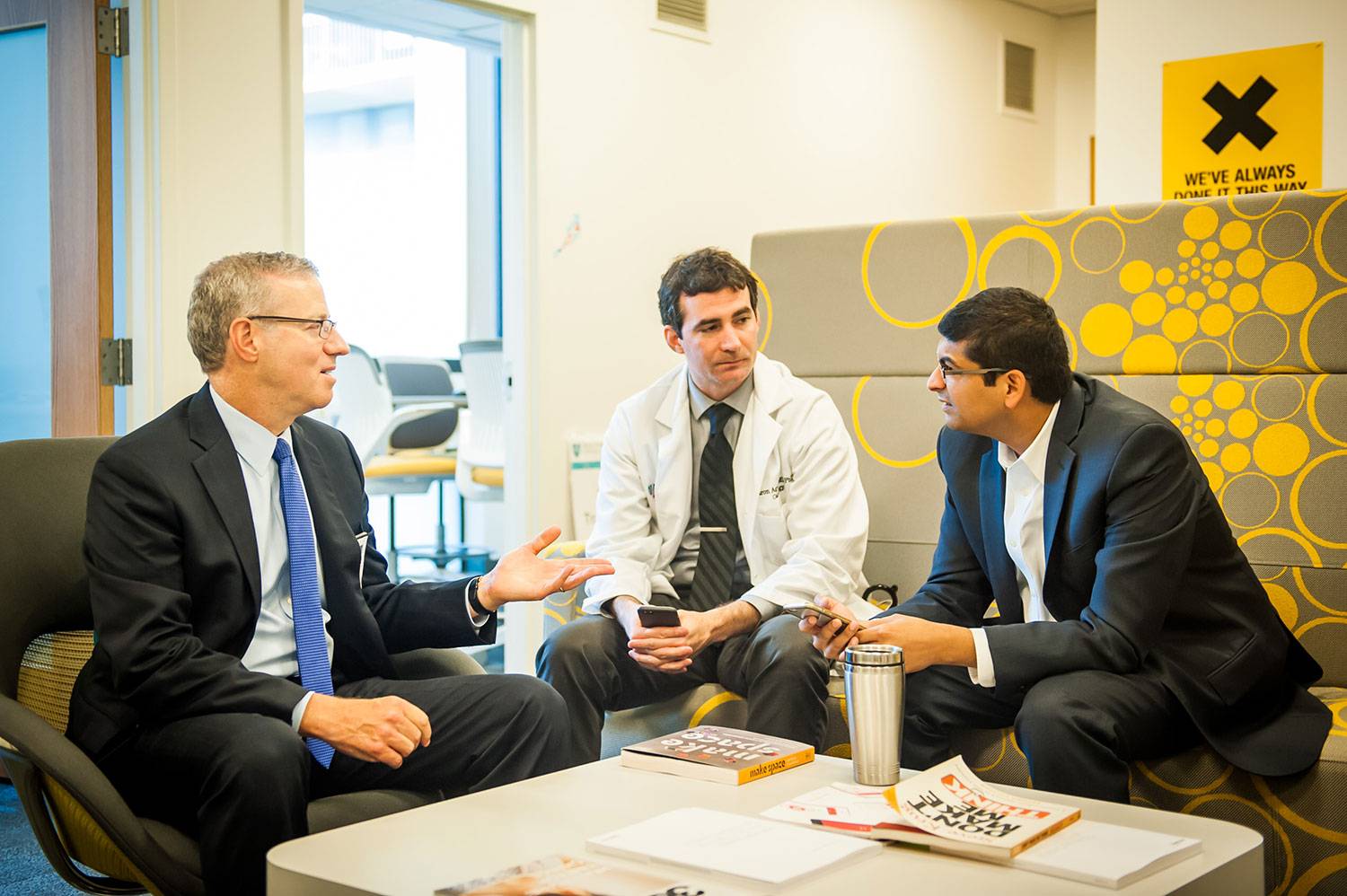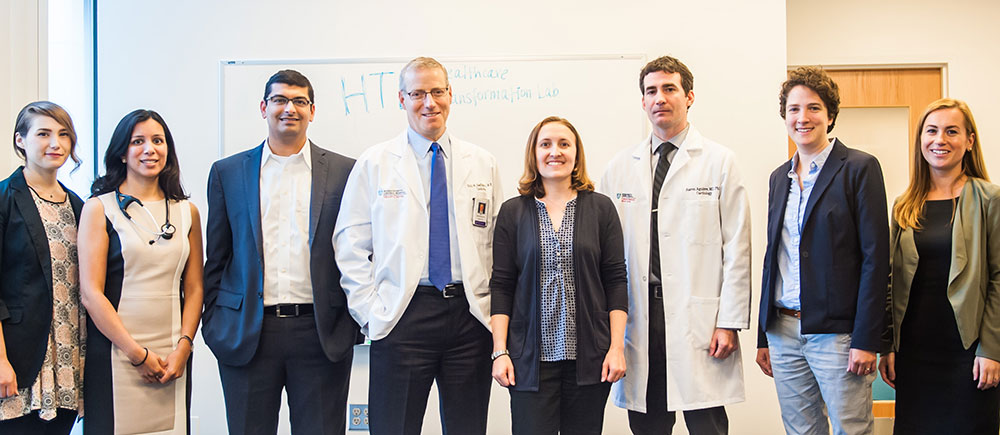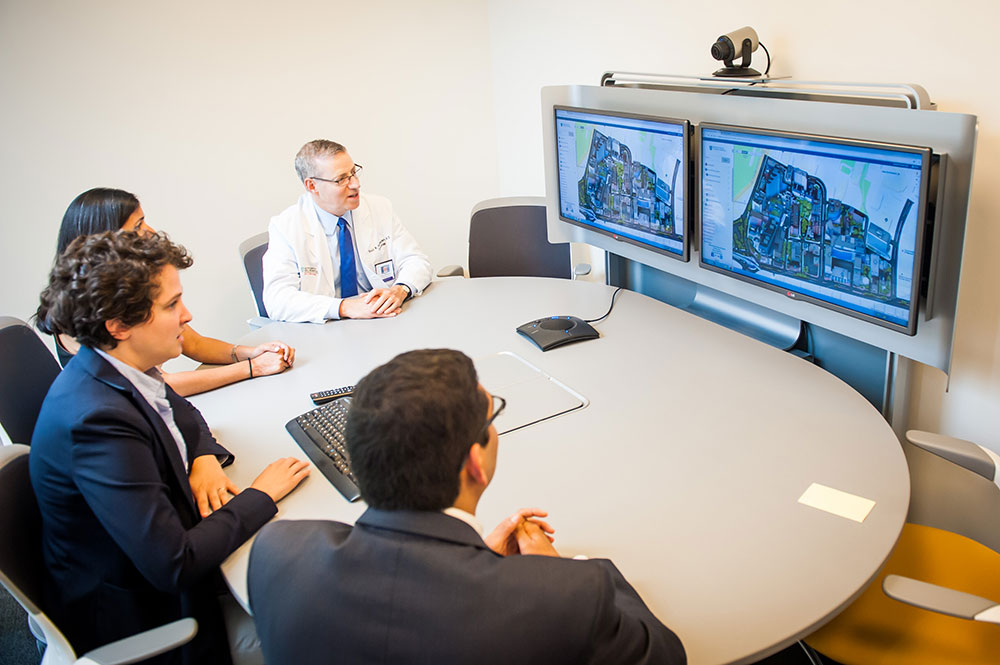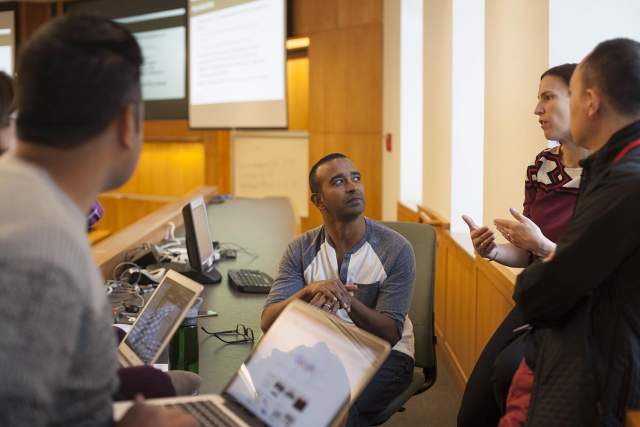Innovation with Heart
As director of the Healthcare Transformation Lab, Eric Isselbacher MHCDS’13 is making health care more efficient, one solution at a time.

After attending the MHCDS program, cardiologist Eric Isselbacher was inspired to develop his own project that promotes better care for patients.
The first five years that cardiologist Eric Isselbacher MHCDS’13 spent as associate director of the heart center at Massachusetts General Hospital (MGH) “were a joy,” he says. “I was building programs, bringing staff together, and improving efficiency of care.”
Once he had tackled that low-hanging fruit, however, he encountered more pushback in approaching bigger challenges. “For better or worse, MGH is a 200-year-old institution. It’s very big, very traditional, and moves very slowly,” he says. “I found myself less motivated to try things because they weren’t likely to succeed.”
Isselbacher was getting ready to give up when he heard about the inaugural class in the Master of Health Care Delivery Science program at Dartmouth. Though he was initially reluctant to attend, his wife convinced him to try it. “She said, ‘What do you have to lose?” Isselbacher says with a laugh. “At least if you are in Hanover, I won’t be able to hear you complain.” During his time at Tuck, a course with then adjunct associate professor Chris Trimble T ’96 about how to innovate inside successful corporations completely changed his perspective. “It’s easy to innovate in a startup, and it’s easy to innovate in a company in trouble,” Isselbacher says. “But in a big successful operation, all of the forces are aligned against you.”
We’re not here to make money or spin out companies. We work from the bottom-up to deliver better care for patients.
The solution, Trimble advised, was to create a project outside of the institution with its own funding and leadership. Isselbacher took that advice to heart when he returned to MGH, launching an independent organization within the heart center, funded by outside grants, calling it the Healthcare Transformation Laboratory (HTL). In the past five years, the center has grown outside of the heart center to inspire change throughout the hospital, taking its lead from frontline staff. “They know where the obstacles are,” Isselbacher says. “We’re not here to make money or spin out companies. We work from the bottom-up to deliver better care for patients.”

The centerpiece of the program is the Ether Dome Challenge (named after the surgical amphitheater where ether was first used). Anyone in the hospital with an idea for a change can submit a proposal. Each year, two winners are chosen, one by HTL staff, and the other by popular vote, with each receiving a new iPad. “We wanted to change the culture to encourage people to bring good ideas,” Isselbacher says. “That is why we made it so public and instituted tangible awards.”
The first year the challenge was offered, a nurse in the catheter lab proposed a simple solution to inform technicians about the cost of equipment, using color-coded stickers to indicate if a cheaper option was available. Since she won the competition, the hospital has saved an estimated $900,000 annually. Other winning projects include digital maps to help patients navigate the MGH campus, and an app to give real-time wait times for appointments to cancer patients.

The lab has pursued its own innovations as well, including an app for physicians to streamline their ability to see and enter information from Electronic Health Records while they are away from their computer. It enables doctors to receive custom alerts, access lab studies, and send HIPPA-secure text messages to colleagues. Using it, Isselbacher was able to receive a CT scan while he was attending a Red Sox game, and send back needed information for treatment.
“I was able to deliver MGH-quality care while I was sitting in my seat at the baseball game, and the doctor in the ER was able to get what she needed,” Isselbacher says. “I feel like I was able to bring joy back into my practice.” As the Healthcare Transformation Lab continues to demonstrate its success in making the lives of patients and physicians easier, Isselbacher hopes it will snowball to inspire everyone in the hospital to be on the lookout for change, he says. “I hope there will be a new generation of doctors who will see innovation as just part of their job.”

